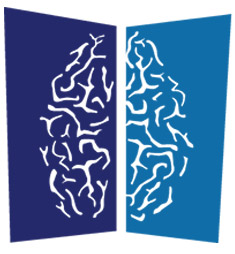Alexander Suarez-Inclan doesn’t remember that he had craniosynostosis surgery as a child. Although his eyes and face were characteristically swollen following his procedure, a few days later, the toddler was back to his normal self and never looked back. While he doesn’t recall any of it, his father does. Joseph Suarez-Inclan was anxious, of course, and admits, “It was a struggle.”
That’s because Alexander, born two months premature, developed craniosynostosis. This craniofacial abnormality causes a protrusion of bone that appears on the forehead and looks like the bow of a boat.
When the condition became apparent, Alexander’s pediatrician referred the father and son to Dr. Arno Fried of Advanced Neurosurgery Associates. At one year old, Alexander underwent surgery with Dr. Fried to correct the anomaly, and thankfully, it was a success.
“It was definitely a roller-coaster ride for any parent,” admits Joseph Suarez-Inclan. “But… years later, he’s a happy child.”
In honor of all the Alexanders out there, we thought we’d take this opportunity to spread awareness during the season for recognition. July is National Cleft & Craniofacial Awareness & Prevention Month (NCCAPM), and Craniosynostosis Awareness Month resides in September.
Below Joseph shares the story of Alexander’s craniosynostosis and his young son’s surgery with Dr. Arno Fried.
Craniofacial Disorders and Craniosynostosis Facts
Craniofacial disorders arise from abnormal development of the face and skull, resulting in a deformity. There are several causes, such as birth defects, disease or trauma. Craniosynostosis is one type of craniofacial disorder.
Craniosynostosis is the premature fusion of one or more of the cranial sutures and can occur as part of a syndrome or as an isolated defect (nonsyndromic). Sutures are the bands of fibrous tissue that connect the skull bones and serve to protect the brain and the face. Craniosynostosis is called “simple” when only one suture is involved and “compound” when two or more sutures are involved.
Normally, a newborn’s sutures provide space for brain growth (this space appears at the site of the fontanelles, such as the soft spot on top of a baby’s head) so as it grows, the head maintains a symmetrical shape. However, if one or more of the sutures closes prematurely, the pressure causes the brain to grow in a way that creates an unusual head shape or distorted facial features.
For a full description of each, read here.
Timing of Surgery for Craniosynostosis Patients
Surgery for this condition is often recommended. In experienced hands and with a strong team of experts, the results are excellent. In fact, in an analysis of surgery for craniosynostosis, the authors discuss how the evolution of this surgery has progressed rapidly in two decades, with an even greater rate of success.
Customarily, surgery is performed in the first year of life (sometimes even in the first few months) before the aberrant growth can make a more severe impact. The timing of the surgery depends on the type of craniosynostosis and the evaluation of the individual patient by a skilled pediatric neurosurgeon.
For example, in the case of Alexander Suarez-Inclan, his premature birth required a wait time to undergo surgery. The small and vulnerable baby, whose fate sent his father on an “emotional roller coaster,” is today a thriving five-and-a-half-year-old boy with model good looks. On his way to first grade, he enjoys playing soccer and hip-hop dancing in his free time.
Now, his father says, “Everything is great,” but, he didn’t always feel this way. “Any child is fragile,” says Joseph looking back on Alexander’s surgery. “It was a struggle, but I got very lucky. I had a team to help not just with surgery, but with support.”
Joseph is grateful that Dr. Fried explained everything in detail before it came to pass, so there were no real surprises. “He was with me every step of the way. I could call anytime and with unlimited questions,” he adds.
In early 2017, Alexander went in for a checkup with Dr. Fried. Although Dr. Fried said Alexander no longer needs the appointments, Joseph does it for his own satisfaction. “If you don’t go, you don’t know,” he says.
Dr. Fried, who has spent an entire neurosurgery career treating children, completely understands. “You can bring him back whenever you want to,” he assured Joseph, “but everything is perfect.”
Watch Alexander Suarez-Inclan’s story below.
Craniofacial Disorders and Craniosynostosis Awareness
Patients are encouraged to share their stories to help raise awareness for these conditions. In addition, there are several support groups and organizations to help parents and their children.

ANA is a team of expert neurosurgeons and medical professionals, who combine their decades of knowledge to provide information, events, and articles on a range of neurological conditions.
